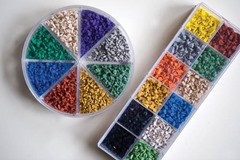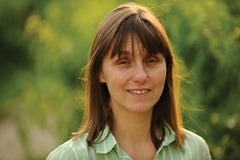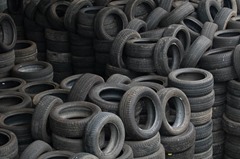A circular economy
 The UK Green Alliance’s Julie Hill explained how to improve the recovery of resources by businesses when speaking at Environment Ireland.
The UK Green Alliance’s Julie Hill explained how to improve the recovery of resources by businesses when speaking at Environment Ireland.
Environmental policy analyst Julie Hill chairs the Circular Economy Task Force, launched by the UK think tank Green Alliance in 2012.
Speaking at the Environment Ireland conference, Hill remarked that the circular economy is the “new buzzword” for resource efficiency and recycling. It also expresses an aspiration to condition the whole of the economy, ensuring that it “consistently and comprehensively” seeks to recover product and material and to keep that in circulation “for as long as possible.”
Britain’s Waste and Resources Action Programme has estimated that 19 per cent of its economy involves recovered resources. The Green Alliance has a history of working with businesses, who in turn fund some of its work. This provides “real live business experience” for the organisation while businesses get insights into the policy process. The taskforce involved the Department for Environment, Food and Rural Affairs (Defra) and the Department for Business, Innovation and Skills.
Its first report – ‘Resource resilient UK’ – was published in July last year. This followed on from the two Whitehall departments’ resource security action plan (March 2012) and previous EU-level discussions about future scarcity.
“This effort has come from the upstream,” Hill noted. “It’s come from worrying about our future access to resource and how being a more circular economy can help, rather than coming from the waste end and worrying about increased waste or the growth of waste or the problems of disposing or dealing with waste.”
Debates around resource scarcity, though, often use a language that’s not necessarily appropriate.
 “We will never run out of anything,” she commented. “It will probably just get harder to get.”
“We will never run out of anything,” she commented. “It will probably just get harder to get.”
Similarly, the fossil fuel debate in the 1970s predicted that oil and gas supplies would have been depleted by now but more were discovered: “There is always more out there if the economics drive people to go and look and the same is true of probably any resource that we use.”
This debate is therefore more about resource security rather than resource scarcity. The taskforce concluded that any business that has any sense of its “future resource risk” should be able to see the case for more ‘circular’ operations. Some are taking this course but many are unable to do so because of certain barriers.
Businesses have indicated that they can act but government structural support is “extremely important” e.g. legislation, financial support or a better regulatory environment. Companies who spoke to the task force preferred action at a European or global level.
Two sets of barriers were identified: market and material.
In terms of the market, some resources are reused more than others. For a typical car, the value of reused resources (£475) is slightly larger than the parts value (£421) and the reuse of old parts has a good market.
By comparison, the reuse markets for iPhones are “not yet as established as they might be.” Putting an iPhone through a shredder only results in a tiny amount of material being reclaimed. For textiles, there is a strong market for reuse but most of the product goes elsewhere in the world.
The business models for phone and textile ‘reuse markets’ are in place but the delay in setting them up is limiting the value that could be obtained. The reuse and recycling processes for plastic bottles are straightforward but the problem is that there are “escape routes” for the material which create uncertainty. Bottles can be exported or sent to energy-from-waste and manufacturers always have the option of using (often cheaper) virgin materials.
Turning to the material barriers, Hill highlighted five characteristics which would affect how easy it was to recycle a resource:
• value;
• the level of control that people have in the system i.e. to retrieve the resource;
• whether the resource has been redesigned for recycling and remanufacturing;
• the pace of change; and
• the level of concentration or contamination.
 More disclosure of the risks, in her view, would drive up motivation among businesses and enhance collaboration e.g. retailers getting together to demand a certain stream of material. The overall message from the exercises was that “these markets are not functioning on their own” and there was a need to fix the markets by doing deals. Government can broker that kind of deal and also help to design product characteristics.
More disclosure of the risks, in her view, would drive up motivation among businesses and enhance collaboration e.g. retailers getting together to demand a certain stream of material. The overall message from the exercises was that “these markets are not functioning on their own” and there was a need to fix the markets by doing deals. Government can broker that kind of deal and also help to design product characteristics.
To take one example, the Closed Loop in London takes discarded soft drinks and water bottles made from polyethylene terephthalate (PET) and milk bottles made from high density polyethylene (HDPE) and recycles them back into food-grade plastic. The resulting rPET and rHDPE is then used to make new bottles and food packaging.
The facility in Dagenham is capable of recycling 35,000 tonnes of bottles each year. This represents nearly 10 per cent of the plastic bottles currently collected for recycling in the UK, saving approximately 52,500 tonnes of carbon dioxide emissions annually.
www.green-alliance.org.uk





